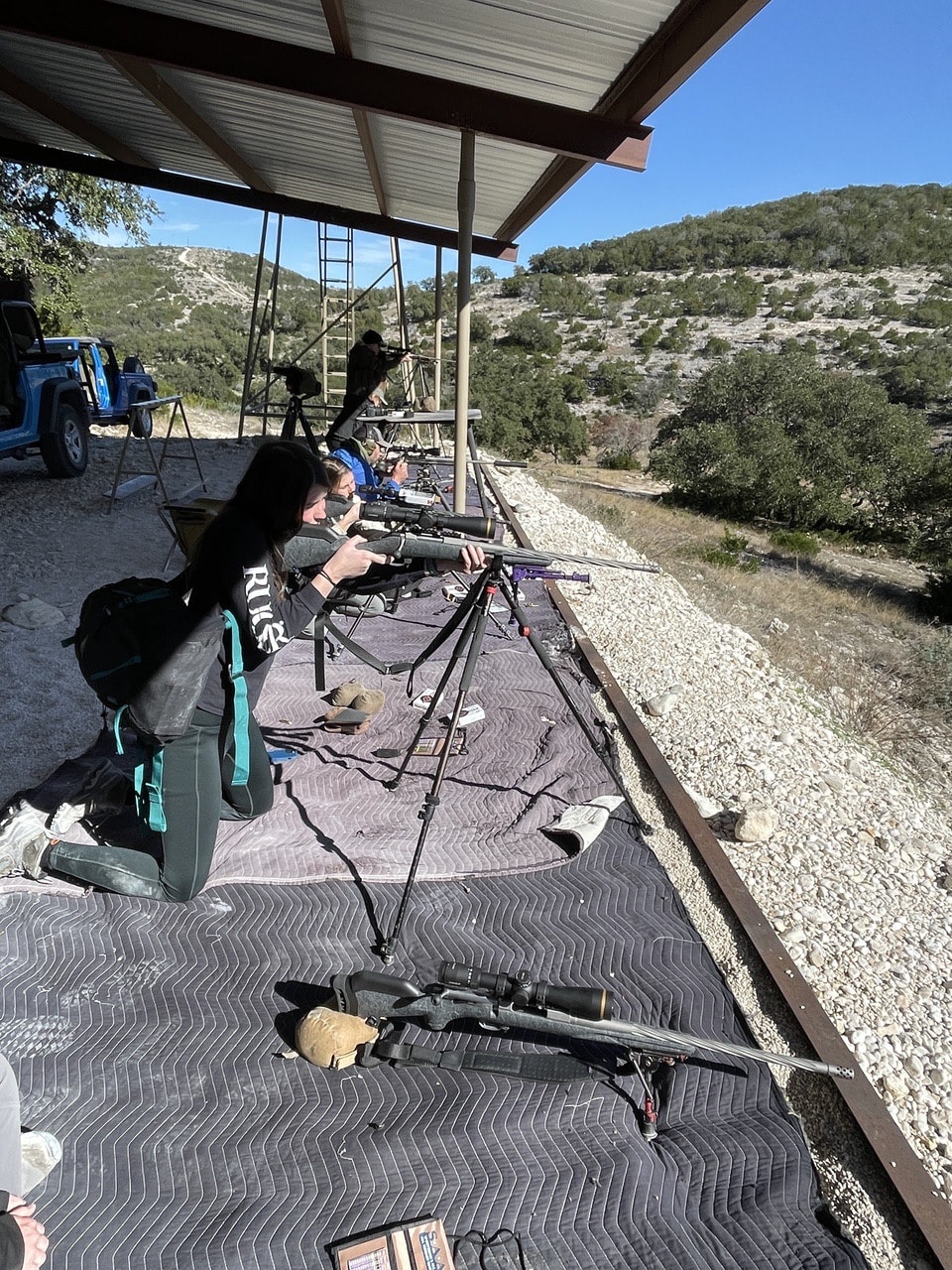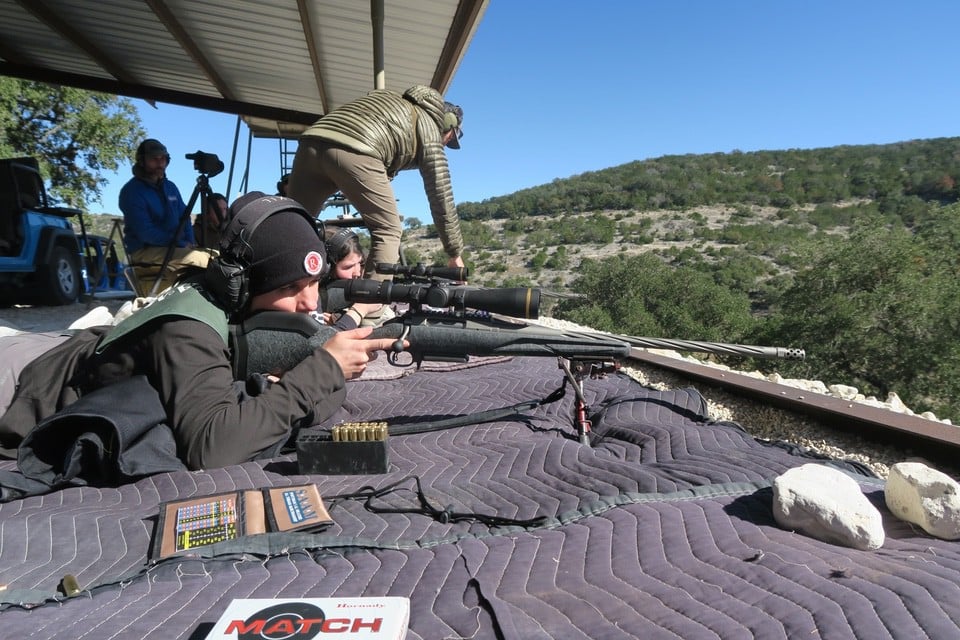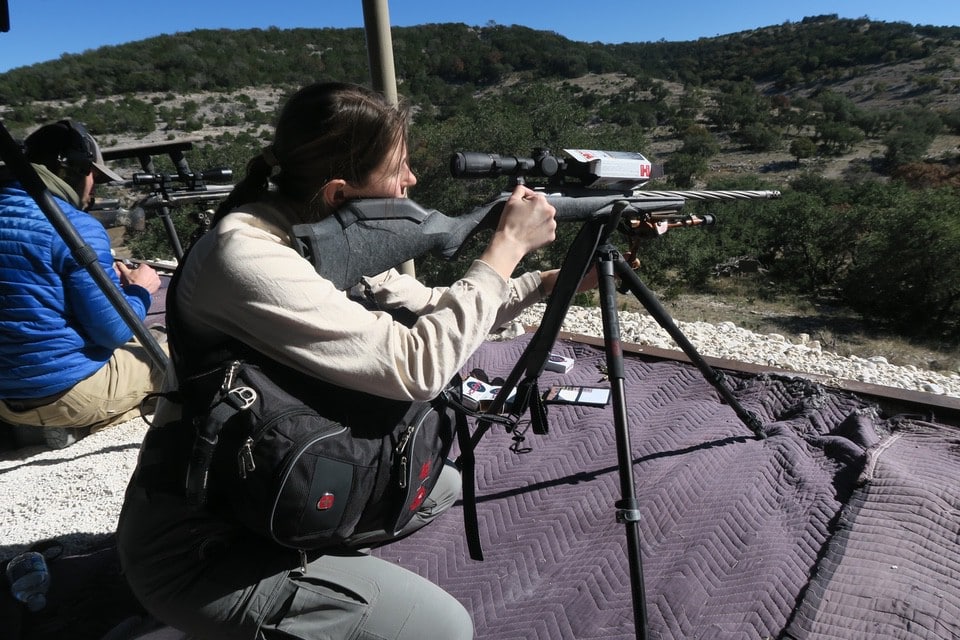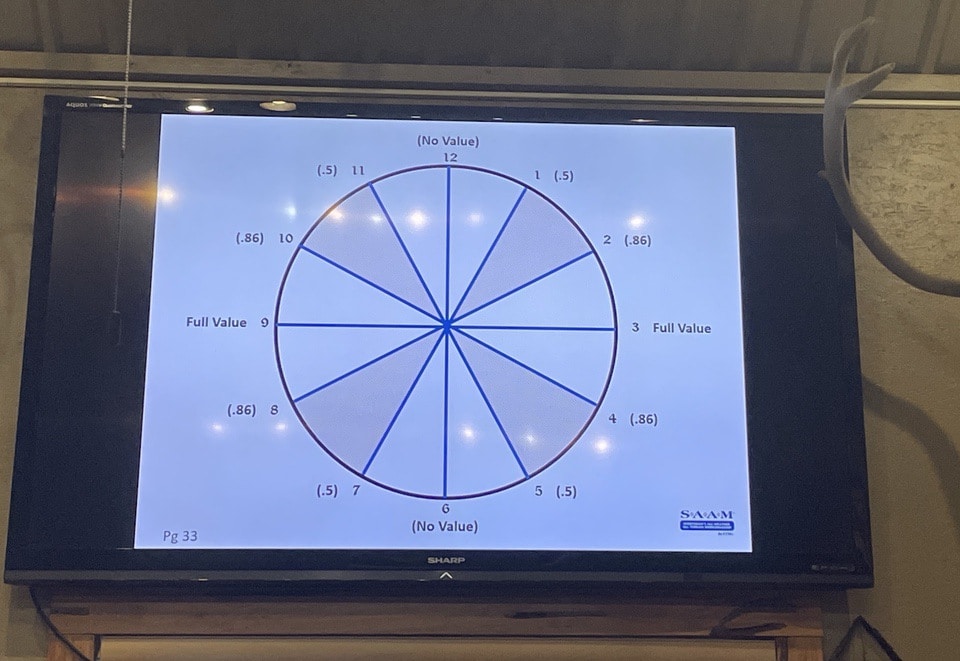If you hunt out West, you’ll absolutely need to understand the impact that wind plays in order to make a clean kill shot – since it’s more likely you might be presented with longer shots. If you’re into precision shooting, it’s also a must-know so that you can hit the bullseye.
Sponsored by Ruger
Recently I attended the SAAM Field to Fork Course at the FTW Ranch, courtesy of Ruger. The importance of understanding the value of wind became crystal clear to me while working through exercises on the various ranges. At the shorter ranges typical of my home hunting area, I’ve been able to make good shots by using “Kentucky windage” based on my experience and practice with my rifle/scope/ ammo combination on the property, itself. Unfortunately, this sort of estimation is iffy at longer ranges beyond about 400 yards. On an expensive guided hunt in open country where I haven’t hunted before, with the possibility of longer shots I don’t want to risk making a bad shot on an animal. As such, I figured the FTW training would be invaluable to me.

The wind is always blowing somewhere on the FTW Ranch, and they have the ranges to accommodate drills for windage. Fortunately, there are ways to calculate the value of wind so you don’t have to make wild guesses on where to point your rifle. We learned a few ways while in the classroom that we then applied on the ranges under the watchful eyes of the range staff.

If you want to reliably hit distant targets when there is any wind blowing, it’s imperative to have a range card that is specific to your rifle, caliber and scope. At FTW, they provided range cards that corresponded to our Ruger American Gen II rifles, using Hornady 6.5 CM ammo and Leupold VX-5HD scopes. Of course, you will have to use the same ammo that you use for hunting to build your range card.

Experienced shooters build their range cards to suit themselves, but there are many examples online. You can even download the Army’s official standard range card if you wish. If someone hasn’t already built a range card for you like they did for us at FTW, you’ll have to go out and shoot, while recording the data you need in order to hit your target. This data will include values (in Mils, MOA, or inches depending on your scope) to adjust for the bullet climb and drop at different distances, and also wind effects at increasing ranges. The Army’s card is for a specific situation; the FTW range cards we used were more generalized, typical for a hunter. They recorded the specific ballistic information we needed to use our scopes to hit targets at various ranges and wind situations.
Note: There are two things to consider when it comes to wind – speed and direction.

Environmental Method
According to the field book from the course, here are some factors to observe so that you can discern how fast the winds are moving:
Be looking around at your environment before you start even calculating more precisely the velocity of the wind. Also, the instructors reminded us that on a 200+yard shot, the wind might be acting differently between you and the target. So watch for more wind action at various distances to the target.
A note about wind gusts: it’s best to wait them out, if possible. There’s usually a cycle to them. Figure it out and take advantage of a lull.

Mirage Method
Mirage is an optical effect that distorts distant objects because the light rays you see have been bent while traveling through air with different densities. The mirage used for wind estimation appears as ripples in the air above things being heated, typically by the sun. Since wind is moving air, wind affects the appearance of mirage. For this method, you’ll need to use your spotting scope or a rifle scope that has a focusing capability. Note that not all rifle scopes will have this capability, so if yours doesn’t, you’ll have to use a spotting scope. Focus the scope on the target, then dial the focus ring on the scope to midrange. Here’s what you’re looking for, and what it means, in the mirage method:

Kestrel Meters
Kestrel meters come highly recommended at the course. These small, mobile-phone size devices can perform a range of operations – from speed of the wind, to temperature, humidity and heat stress information. If you want a more advanced meter, you can get one that tracks nearly 20 different weather parameters, and save the data.
Things such as temperature and humidity play roles in how a bullet flies, as well, and come into play when estimating the bullet’s flight path at longer distances. According to the book, “The higher the temperature, the thinner the air, thereby causes the projectile to fly flatter, Conversely, the lower the temperature, the heavier the air, therefor the bullet will drop faster.” Or, “Colder = Drop” and “Warmer = Raise.”
As for humidity, it’s good to understand these principles, which can be confusing:
The resource book stated, “The higher the humidity, the lighter the air, therefore applying less air drag consequently causing a higher bullet impact.” So the opposite applies to lower humidity. The air is denser and the bullet will drop faster.

Wind Direction
Perhaps one of the most valuable lessons I learned in this course was the importance of determining the wind direction and its ensuing “value” on the performance of the bullet.
Here’s where it felt like we had gone back to high school. It came time to calculate simple wind, which meant I needed to understand the math behind the science. This is where it’s imperative to understand MILs and MOAs, which is a whole ’nother article. A beneficial one is here, at Gideon Optics. Know which system your scope operates under, and go on from here. Zero your rifle at 100 or 200 yards for hunting, first.
Most centerfire hunting rifles will maintain a standard drift rate up to 500-700 yards. That’s why the wind speed becomes important at around 500 yards. Beyond that, your bullet will be “gone with the wind,” so you need to know where it’s going and how fast. You need to learn how much to aim into the wind.
First though, before the math begins, you need to determine the value of the wind. With permission from the FTW Ranch, you can see the illustration below, which shows wind values.

Think of wind direction as oriented on the face of a clock where there’s an imaginary line between your muzzle and the target. Headwinds are at noon and tailwinds are at 6. A bullet’s trajectory won’t be impacted much at the typical hunting shot ranges by headwinds and tailwinds.
A direct cross wind is either at 9 or 3 o’clock and has “full value.” The calculated or actual effects these full value winds have on your bullet trajectories are an important portion of a range card. They are listed along with the bullet climb and drop values for each range on your card.
Wind from 1, 2, 4, 5, 7, 8, 10 and 11 o’clock are half-value winds, or oblique winds, but even though these winds may affect windage half as much as full-value winds, the effect can range from zero to 100% depending on how far off the wind direction is from no value (12 o’clock or 6 o’clock) to full value (9 o’clock or 3 o’clock). These partial wind percentages are noted on your card, but not specifically listed for each range. Instead, they are applied mentally by the shooter while adjusting the riflescope as necessary.

As we found out while on the ranges, using our gray matter to figure out wind speed and direction greatly enhanced our performances on targets up 700 yards. If you don’t feel comfortable self-teaching this important skillset, and there are several online resources that will be most beneficial, I’d recommend heading down to the FTW Ranch for one of its courses. That way, you’ll combine classroom and range experience, and you’ll be able to pick the brains of the some of the world’s best snipers.
Publisher/Editor Barbara Baird is a freelance writer in hunting, shooting and outdoor markets. Her bylines are found at several top hunting and shooting publications. She also is a travel writer, and you can follow her at https://www.ozarkian.com. View all posts by Barbara Baird